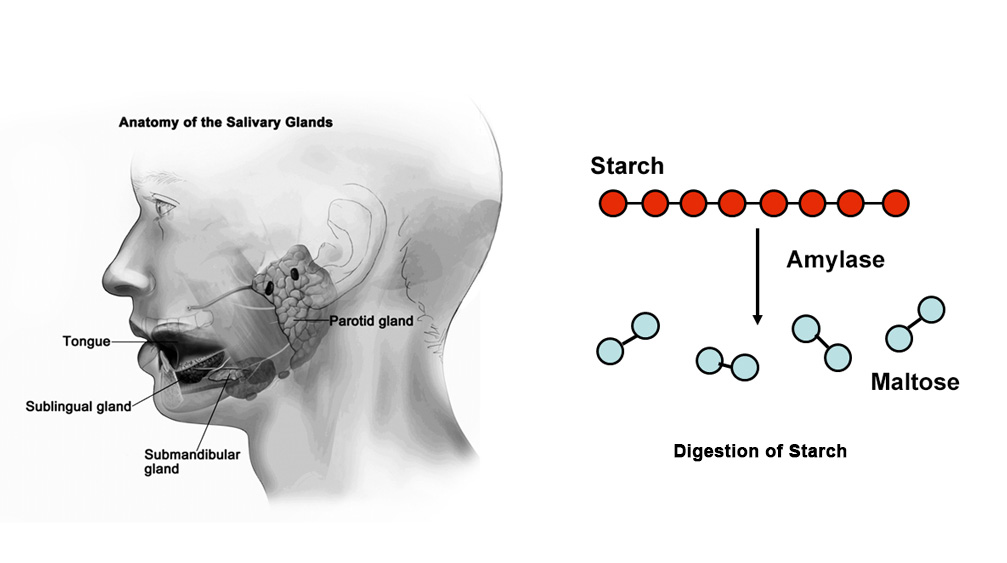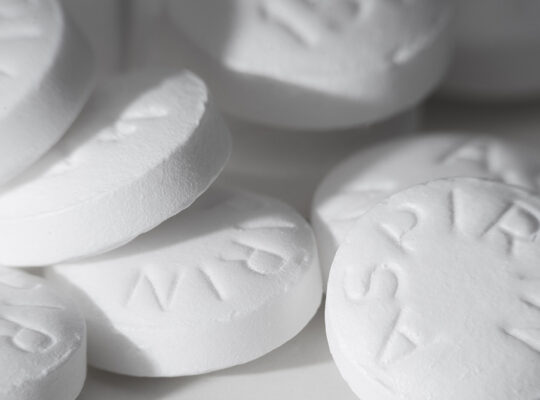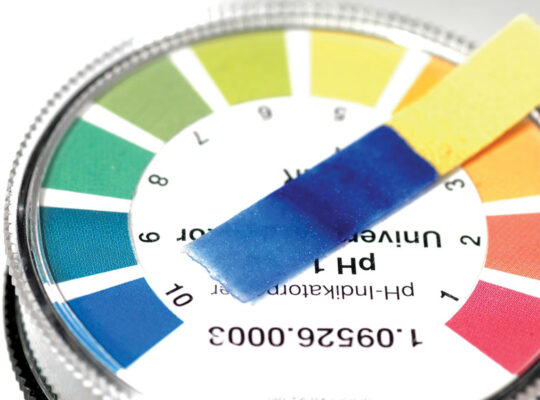Table of Contents
Our Objective
Our aim is to study the effect of different temperatures on the activity of salivary content, amylase on starch.
Theory
All living beings need the energy to survive. It is from the food we consume that we get our energy. We know that the energy we are getting is by the process of digestion that breaks down the complex substance of starch into simpler molecules of glucose, which are further metabolized into CO2 and water through the process of glycolysis. The human digestive tract starts at the mouth and ends at the anus.
In the Beginning
The digestion of the food starts as soon as we put food in our mouths. Our teeth cut the food into small pieces and the salivary glands secrete saliva that mixes with these food materials. The saliva contains an enzyme called salivary amylase which hydrolyses starch into maltose. The complete digestion of starch occurs only in the small intestine by the action of pancreatic amylase. The activity of enzymes is strongly affected by several factors, such as temperature and pH.
Effect of Temperature
All enzymes are proteinaceous in nature. At a lower temperature, the enzyme salivary amylase is deactivated and at a higher temperature, the enzyme is denatured. Therefore, more time will be taken by an enzyme to digest the starch at lower and higher temperatures. The optimum temperature for the enzymatic activity of salivary amylase ranges from 32 °C to 37 °C. The optimum temperature means that the temperature at which the enzyme shows the maximum activity. At this optimum temperature, the enzyme is most active and hence, takes less time to digest the starch.
How to test it?
The effect of pH on the activity of salivary amylase on starch can be studied by using the Iodine test. If we add saliva to starch, the salivary amylase present in saliva gradually acts on starch and converts it into maltose. Starch keeps on giving blue color with iodine till it is completely digested into maltose. At this point, no blue color is formed. This is the endpoint or achromic point.
Materials Required
Three series of test tubes having iodine solution in each, test tubes, ice cubes, water, 15 ml 1% starch solution + 3 ml 1% NaCl, saliva solution, droppers, thermometer, Bunsen burner, and wire gauze.
Real Lab Procedure
- Take beaker containing 15 ml of 1% starch solution + 3 ml of 1% NaCl solution.
- Divide and pour this solution into three test tubes and mark them as A, B, and C.
- Maintain the temperature of the beaker containing ice cubes at 5°C.
- Take a beaker containing ice cubes and keep it on the table.
- Take another two beakers containing water and heat over the Bunsen burner.
- Now transfer experimental tube A into a beaker containing ice.
- Transfer the second experimental tube B into the water bath set at 37°C and the third experimental tube C into the beaker maintained at 50°C.
- Using a dropper, take 1 ml saliva solution and transfer the solution into test tube A.
- Similarly, add 1 ml saliva solution into test tube B and test tube C.
- Immediately, using a dropper, take few drops from experimental tube A and transfer this into first series of test tubes having iodine solution.
- Similarly, using fresh droppers, do the same procedure for test tube B and test tube C and transfer the solution into the second and third series of test tubes having iodine solution.
- Note this time as zero minute reading.
- After an interval of 2 minutes, again take a few drops from each tube and add to the iodine tubes and note the change in color of iodine.
- Keep on repeating the experiment at an interval of every 2 minutes till color of iodine does not change.
Results
It takes less time to reach an achromic point at 37°C, as the enzyme is maximum active at this temperature, while at higher and lower temperatures more time is taken to reach the achromic point.
Conclusion
All enzymes are proteinaceous in nature. At lower temperatures, the enzyme salivary amylase is deactivated and at higher temperatures, the enzyme is denatured. Therefore, more time will be taken by an enzyme to digest the starch at lower and higher temperatures. At 37° C, the enzyme is most active, hence, takes less time to digest the starch.








